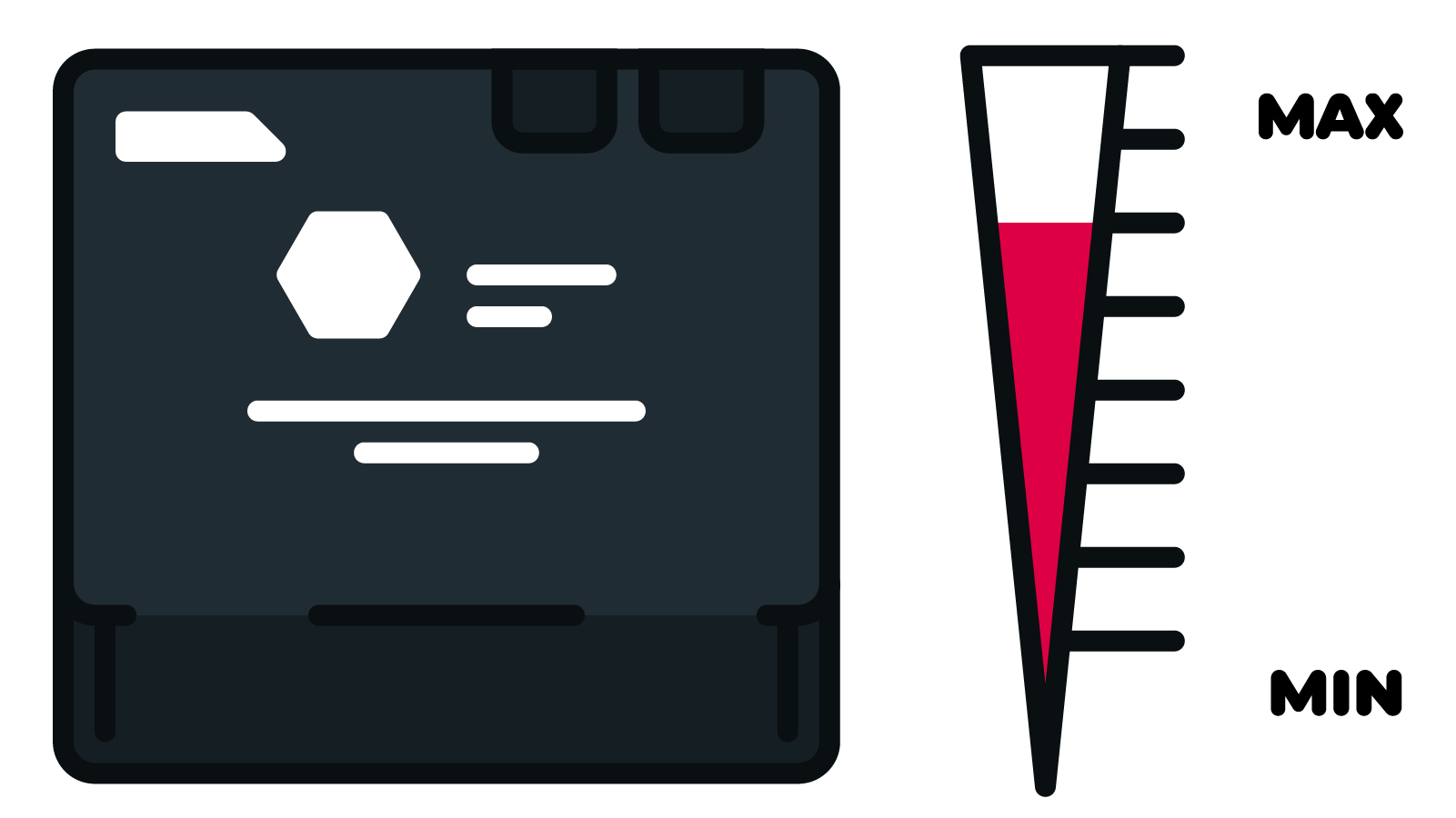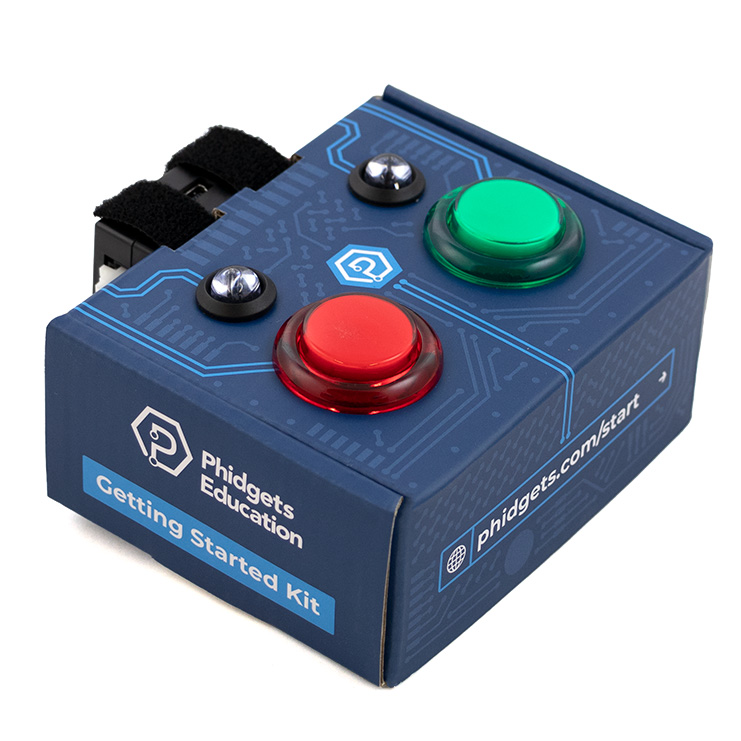Prerequisites
This project assumes you are familiar with the following
Setup
All you need for this project is the Getting Started Kit.
Write code (Java)
Copy the code below into a new Java project. If you need a reminder of how to do this, revisit the Getting Started Course.
Not your programming language? Set your preferences so we can display relevant code examples
//Add Phidgets Library
import com.phidget22.*;
public class Analyze {
public static void main(String[] args) throws Exception {
//Define
double[] temperatureList = new double[10];
//Create
TemperatureSensor temperatureSensor = new TemperatureSensor();
//Open
temperatureSensor.open(1000);
//Set data interval to minimum | This will increase the data rate from the sensor.
temperatureSensor.setDataInterval(temperatureSensor.getMinDataInterval());
//Use your Phidgets
for (int i = 0; i < 10; i++) {
temperatureList[i] = temperatureSensor.getTemperature();
System.out.println(temperatureList[i]);
//Sleep until new data is available
Thread.sleep(temperatureSensor.getDataInterval());
}
//Analyze your list
double minVal = temperatureList[0];
for (int i = 0; i < temperatureList.length; i++) {
if (temperatureList[i] < minVal) {
minVal = temperatureList[i];
}
}
System.out.println("Minimum Value " + minVal + " degrees Celsius");
Thread.sleep(250);
}
}
package analyze;
//Add Phidgets Library
import com.phidget22.*;
public class Analyze {
public static void main(String[] args) throws Exception {
//Define
double[] temperatureList = new double[10];
//Create
TemperatureSensor temperatureSensor = new TemperatureSensor();
//Open
temperatureSensor.open(1000);
//Set data interval to minimum | This will increase the data rate from the sensor.
temperatureSensor.setDataInterval(temperatureSensor.getMinDataInterval());
//Use your Phidgets
for (int i = 0; i < 10; i++) {
temperatureList[i] = temperatureSensor.getTemperature();
System.out.println(temperatureList[i]);
//Sleep until new data is available
Thread.sleep(temperatureSensor.getDataInterval());
}
//Analyze your list
double minVal = temperatureList[0];
for (int i = 0; i < temperatureList.length; i++) {
if (temperatureList[i] < minVal) {
minVal = temperatureList[i];
}
}
System.out.println("Minimum Value " + minVal + " degrees Celsius");
Thread.sleep(250);
}
}
Code is not available for this project.
Write code (Python)
Copy the code below into a new Python project. If you need a reminder of how to do this, revisit the Getting Started Course.
Not your programming language? Set your preferences so we can display relevant code examples
#Add Phidgets Library
from Phidget22.Phidget import *
from Phidget22.Devices.TemperatureSensor import *
#Required for sleep statement
import time
#Create
temperatureList = []
temperatureSensor = TemperatureSensor()
#Open
temperatureSensor.openWaitForAttachment(1000)
#Set data interval to minimum | This will increase the data rate from the sensor.
temperatureSensor.setDataInterval(temperatureSensor.getMinDataInterval())
#Use your Phidgets
for i in range(10):
temperatureList.append(temperatureSensor.getTemperature())
print(str(temperatureList[i]))
#Sleep until new data is available. Divide by 1000 to convert from ms to seconds.
time.sleep(temperatureSensor.getDataInterval()/1000)
#Analyze your list
minVal = temperatureList[0]
for i in range(len(temperatureList)):
if(temperatureList[i] < minVal):
minVal = temperatureList[i]
print("Minimum Value: " + str(minVal) + " degrees Celsius")
Write code (C#)
Copy the code below into a new C# project. If you need a reminder of how to do this, revisit the Getting Started Course.
Not your programming language? Set your preferences so we can display relevant code examples
using System.Collections.Generic;
using Phidget22;
namespace Analyze
{
internal class Program
{
static void Main(string[] args)
{
//Define
double[] temperatureList = new double[10];
//Create
TemperatureSensor temperatureSensor = new TemperatureSensor();
//Open
temperatureSensor.Open(1000);
//Set data interval to minimum | This will increase the data rate from the sensor.
temperatureSensor.DataInterval = temperatureSensor.MinDataInterval;
//Use your Phidgets
for (int i = 0; i < 10; i++)
{
temperatureList[i] = temperatureSensor.Temperature;
System.Console.WriteLine(temperatureList[i]);
//Sleep until new data is available
System.Threading.Thread.Sleep(temperatureSensor.DataInterval);
}
//Analyze your list
double minVal = temperatureList[0];
for (int i = 0; i < temperatureList.Length; i++)
{
if (temperatureList[i] < minVal)
{
minVal = temperatureList[i];
}
}
System.Console.WriteLine("Minimum Value: " + minVal.ToString() + " degrees Celsius");
System.Threading.Thread.Sleep(5000);
}
}
}
Write code (Swift)
Copy the code below into a new Swift project. If you need a reminder of how to do this, revisit the Getting Started Course.
Not your programming language? Set your preferences so we can display relevant code examples
Code not available.
Run Your Program
Your program will capture 10 temperature samples and report the minimum value.
Practice
- Using the code above, calculate the maximum value and report it to the user.
- Using the code above, calculate the average value and report it to the user.
















